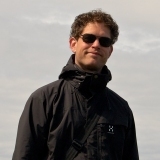INDI Library v2.0.7 is Released (01 Apr 2024)
Bi-monthly release with minor bug fixes and improvements
Solid Ekos/Indi version
- Jasem Mutlaq
-

- Away
- Administrator
-

Replied by Jasem Mutlaq on topic Solid Ekos/Indi version
Please Log in or Create an account to join the conversation.
Replied by Eric on topic Re:Solid Ekos/Indi version
-Eric
Please Log in or Create an account to join the conversation.
- Jasem Mutlaq
-

- Away
- Administrator
-

Replied by Jasem Mutlaq on topic Re:Solid Ekos/Indi version
Please Log in or Create an account to join the conversation.
Replied by Eric on topic Re:Solid Ekos/Indi version
-Eric
Please Log in or Create an account to join the conversation.
- Jose Corazon
-
 Topic Author
Topic Author
- Offline
- Supernova Explorer
-

- Posts: 1119
- Thank you received: 182
Replied by Jose Corazon on topic Solid Ekos/Indi version
Maybe I am interpreting this wrong, but that was not the problem I had. When imaging the same target, the guide module recalibrates reliably after the meridian flip.
The problem I encountered occurred when the scheduler was managing more than one target. After the first target slipped below altitude limits, the scheduler would then - correctly - switch to the next target in line. However, the guide module would not recalibrate. Which resulted in the ugly image I posted above: After switching to the second target on the other side of the meridian, the guide module would continue to use the previous calibration data from Target 1 now on Target 2. Which means that not only DEC is now reversed, but RA would also not be optimally calibrated.
It would be safer to just instruct the guide module to OPTIONALLY clear the data and recalibrate after EVERY meridian flip or else swap the DEC data, AND DEFINITELY recalibrate upon switching to a new target.
Please Log in or Create an account to join the conversation.
- Jasem Mutlaq
-

- Away
- Administrator
-

Replied by Jasem Mutlaq on topic Solid Ekos/Indi version
Please Log in or Create an account to join the conversation.
Replied by Eric on topic Re:Solid Ekos/Indi version
It must be noted that calibration results are different at zenith and at horizon, I certainly confirmed this with real-life tests. Damage due to a calibration done 4 hours before is clearly visible on my F=480mm.
So long-exposure targets, even close from each other like mosaics, should benefit from being divided to recalibrate in-between.
So there is room for improvement on when to reset calibration. We could consider using the same method as the refocus mechanism, but using HA/altitude-based angular distance instead of elapsed time.
-Eric
Please Log in or Create an account to join the conversation.
- Jose Corazon
-
 Topic Author
Topic Author
- Offline
- Supernova Explorer
-

- Posts: 1119
- Thank you received: 182
Replied by Jose Corazon on topic Re:Solid Ekos/Indi version
That's why I would prefer to rather calibrate one time too often than one time too few. Only after a meridian flip, while staying on the same target, i.e. when Declination does not change, should just swapping the DEC data be sufficient.
In all other cases, when DEC is changing, I would think only recalibrating can yield optimal results.
Please Log in or Create an account to join the conversation.
- Scott Denning
-

- Offline
- Elite Member
-

- Posts: 300
- Thank you received: 57
Replied by Scott Denning on topic Re:Solid Ekos/Indi version
But a better approach is to use the declination and side-of-pier to calculate guiding adjustments, so that the calibration remains valid all over the sky. Just as with PHD, PHD2, TheSkyX, or MaxIM DL, it's unnecessary to calibrate for a specific target.
Rather, calibration provides the orientation of the guide camera and guider image pixel scale relative to the sky. The rest of the guide pulse calculation is precisely deterministic from the declination and pier side.
There's no reason to calibrate again unless you either (1) change out equipment -- mount, guide scope, camera; or (2) forget the declination and side-of-pier where calibration was performed. Unfortunately it appears that the KStars guider does the latter every time!
Please Log in or Create an account to join the conversation.
Replied by Patrick on topic Solid Ekos/Indi version
So when the calibration fails on Ekos I switch to PHD2.
I don't know what are the algorithms that are used in PHD2 but they look to be more robust than the ones of Ekos. Or maybe I have a serious problem of parameters in Ekos calibration.
Please Log in or Create an account to join the conversation.
- Jose Corazon
-
 Topic Author
Topic Author
- Offline
- Supernova Explorer
-

- Posts: 1119
- Thank you received: 182
Replied by Jose Corazon on topic Solid Ekos/Indi version
What mount, guide scope and guide cam are you using? I am using EQMOD with my Orion Atlas Pro, the Orion mini-guide scope or the Celestron 60/280 mm guide scope and the ZWO 120MM-S.
It may also be a setting problem. I have reduced the calibration iterations to 3 (5 is default), the calibration finishes MUCH faster and is just as robust.
Please Log in or Create an account to join the conversation.
- Vincent Groenewold
-

- Offline
- Elite Member
-

- Posts: 365
- Thank you received: 32
Replied by Vincent Groenewold on topic Solid Ekos/Indi version
Please Log in or Create an account to join the conversation.
